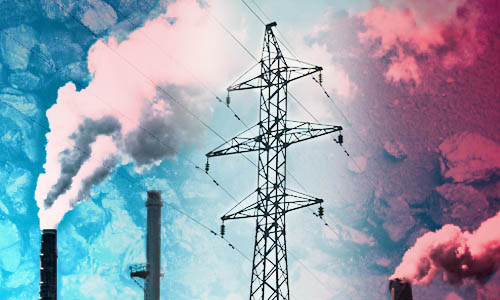Fossil fuel, are you a friend or foe?
Written by Wey Yang Teoh, Associate Professor, School of Energy and Environment, City University of Hong Kong
 The rapid development and economic prowess that we have enjoyed in the last century was built on the backbone of fossil energy. From heating to manufacturing, mass transportation to lighting bulbs, and even powering our remote control, the energy was sourced, directly or indirectly, from crude oil, coal or natural gas which chemical energy was converted to electricity. Without much of public awareness, even our food was derived from fossil fuels through the production of fertilisers. So what is the fuss about fossil fuel?
The rapid development and economic prowess that we have enjoyed in the last century was built on the backbone of fossil energy. From heating to manufacturing, mass transportation to lighting bulbs, and even powering our remote control, the energy was sourced, directly or indirectly, from crude oil, coal or natural gas which chemical energy was converted to electricity. Without much of public awareness, even our food was derived from fossil fuels through the production of fertilisers. So what is the fuss about fossil fuel?
Excessive emission of carbon dioxide and global warming are by far the biggest foes to fossil fuel. With nuclear energy taking a hit with the recent Fukushima incident, people have been more inclined than ever to resort to renewable energies such as solar, wind, and hydropower. Alas, many have hyped an (unrealistic) expectation that we can live entirely fossil-free.
The most likely reality is that we are approaching an energy-mix scenario, where we will rely on both fossil and renewable energy resources. Reason is simple. If we go fully renewable too rashly, many, especially the less privileged, will not even be able to afford heating to survive winter. Likewise, a fully renewable energy-powered manufacturing will skyrocket all basic consumer products.
It will take at least a great few decades, before renewable energies can make a significant inroad into our lives. Contrary to popular belief though, fossil is not all bad, that is, if managed properly. The abundance of readily accessible natural gas and coal shall not be taken lightly. At least global energy providers such as Shell, ExxonMobil and Chevron do not. Tens of billions of dollars in investments are streaming into researching technologies to convert these resources to ultraclean fuels such as hydrogen, methanol and synthetic diesels. The former two can be used to power highly efficient fuel cells, while synthetic diesels are characterised by their cleanliness and high cetane numbers.
Certainly, carbon dioxide, from the burning and processing of these utltraclean fuels, ought to be mitigated in order to close the carbon loop. We simply cannot afford to freely emit carbon dioxide into the atmosphere. Carbon capture and sequestration (CCS) is the most straightforward mitigation technique, where carbon dioxide stationary emission sources such as coal- and gas-fired power plants can be captured, concentrated and pumped underground to be stored as carbonate rocks. The main disadvantage is the high energy input and its massive scale for implementation. Like it or not, CCS is the closest of carbon mitigation technologies to be implemented in the not-too-distant future.
A more promising technique is the reconversion of carbon dioxide to fuels. This enables fuels recycling, or the production of desirable specialty chemicals. Instead of releasing to the atmosphere as a potent greenhouse gas, exhaust carbon dioxide becomes a precious chemical commodity in what appears to be an artificial photosynthesis!
To make carbon dioxide work, we have to first overcome its strong molecular bond. Input energy equal to or greater than this bond energy is required. A convenient source, in line with the concept of photosynthesis, is to derive from solar energy. Either solar thermal heat or light can be used. A chemist’ challenge would be to search for the right thermal-catalysts or photocatalysts, possibly one that requires the least energy. Biologists opt for the most efficient microalgae to perform similar tricks. Let us not forget that it is after all the microalgae in the ocean, and not the forests, as most people would have believed, that serves the green lung of the Earth.
As long as carbon dioxide emissions can be managed properly and sustainably, fossil fuels will continue to serve mankind in the same manner as it had in the past century. Difference only in that dumping of carbon dioxide in the atmosphere is not the end of the story. We are obliged to think of how to retrieve and reuse.